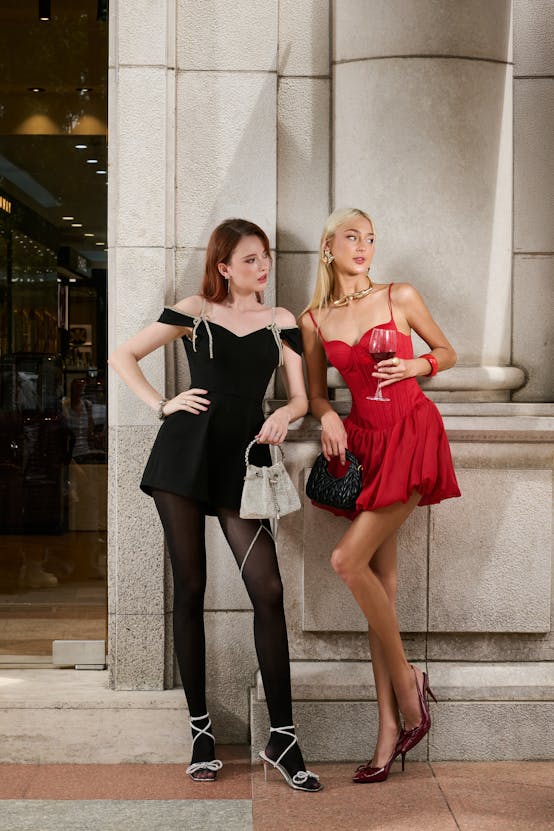Vintage travel posters evoke a sense of nostalgia, transporting us to distant destinations with their captivating designs. This unique art form reflects history and culture, offering more than just decoration; they tell stories of adventure and exploration. Whether you’re seeking to purchase a piece of the past, enhance your home decor, or simply appreciate the artistry, these stunning visuals promise to inspire and ignite your wanderlust.
The Allure of Vintage Travel Posters
Vintage travel posters, with their timeless designs and artistic flair, offer more than just nostalgic imagery—they are portals to the past. These captivating works of art emerged as both advertising tools and cultural artifacts during an era when travel was seen as a glamorous adventure. Their vibrant depictions of iconic destinations not only invited viewers to journey to new lands but also promised an experience filled with wonder and discovery.
En parallèle : What Are the Best Techniques for Styling Short Hair in the UK's Humid Climate?
Understanding Vintage Travel Posters
The significance of vintage travel posters lies in their ability to evoke emotions and memories. Their aesthetic often incorporates bold typography, striking color palettes, and intricate designs that reflect the diverse art movements of their time, such as Art Deco and Modernism. More than mere advertisements, these posters mirrored society’s evolving attitudes toward travel, reflecting technological advancements like the rise of commercial aviation and the allure of luxury rail travel.
Popularity and Nostalgia
The popularity of nostalgic travel art endures today, as individuals seek to connect with the romanticized notion of travel from bygone eras. Collecting vintage travel posters becomes a journey in itself, often driven by the emotional connections these images elicit. They evoke a sense of longing for the simplicity and allure of past adventures, reminding us of an era when destinations were largely uncharted, and exploration was a cherished pursuit.
A découvrir également : Where Can You Find Expert Advice on Styling Outfits for Plus-Size Women in the UK?
Emotional Connections
The emotional connections to vintage travel imagery are profound, shaped by the interplay between visual storytelling and personal memories. People find themselves drawn to these posters for their artistic merit, as well as for their ability to serve as reminders of dreamed-about destinations or cherished past travels. They hold a unique place as decorative art, elevating the ambiance of any space with their historical and aesthetic richness.
Exploring vintage travel posters provides a glimpse into a world where advertising blended seamlessly with fine art, creating timeless works that continue to inspire travel through vintage art. For those interested in diving deeper into this enchanting world, there are More details to explore that journey through time and artistry.
Historical Perspective on Travel Posters
The Evolution of Travel Advertising
Travel posters have long served as a compelling form of advertising, their origins tracing back to the early 20th century. As travel became more accessible due to advancements such as railways and steamships, the need to attract tourists to different destinations grew. In this era, posters were not just advertisements; they were crucial in cultivating a desire for exploration and adventure. Bold imagery and vibrant colors were used to capture the essence of destinations, sparking the imagination of viewers and enticing them to explore new horizons.
Initially, travel posters were utilitarian, showcasing practical information like timetables and ticket prices. However, as the art form matured, there was a shift toward more evocative designs, emphasizing the allure and mystique of far-off lands rather than mere logistics. This transition marked a key moment in the emergence of travel advertising as we understand it today—a blend of enticing visuals and captivating narratives that transcend mere marketing to become art in their own right.
Key Art Movements Influencing Travel Poster Design
The design of vintage travel posters was heavily influenced by several key art movements. Perhaps most notably, the Art Deco movement of the 1920s and 30s played a pivotal role. Characterized by sleek geometric shapes, rich colors, and lavish ornamentation, Art Deco posters exuded an air of luxury and sophistication that mirrored the opulence of the age. This artistry was not merely decorative; it crafted a vision of elegance and style that aligned perfectly with the aspirational nature of travel at the time.
The later emergence of Modernist influences brought cleaner lines and a more minimalist approach, reflecting the evolving aesthetic tastes of the mid-20th century. Designers like A.M. Cassandre revolutionized poster art with their use of perspective and typographic innovations, providing a fresh, contemporary feel that resonated with the public’s growing appetite for novelty and progression. These art movements not only shaped the look of travel posters but also redefined how destinations were perceived globally.
Iconic Travel Destinations Represented in Vintage Posters
Vintage travel posters often spotlighted iconic destinations, becoming cherished keepsakes that captured the dreams and aspirations of travelers. With alluring depictions of landmarks such as the Eiffel Tower, the Colosseum, and the majestic Alps, posters served both as a memento and a motivator. These images did more than advertise—they offered a window into the heart of the places they represented, each poster carrying with it a story of a unique locale.
In addition to well-known sights, many posters featured lesser-known but equally captivating destinations, encouraging exploration beyond the beaten path. Coastal retreats like the French Riviera and quaint countryside escapes in Tuscany became synonymous with the leisure and relaxation sought by affluent tourists of the time. The romanticism of these images continues to inspire nostalgia today, providing a glimpse into the past and the way people once dreamed of adventure and discovery.
Understanding the historical context and artistic influences of vintage travel posters offers insight into their enduring appeal. By capturing both the aesthetic trends and the cultural aspirations of their time, these pieces of art not only promoted travel but also chronicled the evolution of tourism in the modern world.
Collecting and Displaying Vintage Posters
Tips for Sourcing Vintage Travel Posters
Embarking on the journey of collecting vintage travel posters involves more than a mere appreciation for nostalgic aesthetics. To begin, familiarize yourself with the art movements and travel imagery that defined different eras. Pay attention to the typography in vintage travel posters, as it often reveals the time period’s culture and artistic influences. To find authentic pieces, consider visiting local antique shops, flea markets, or specialized galleries that focus on historical travel posters. Online marketplaces and auctions can also be significant resources, but it is crucial to verify the authenticity and condition of the posters before purchasing.
Networking with other collectors can provide insights into finding rare pieces and understanding the value of vintage posters. Joining forums or social media groups dedicated to vintage travel art can enhance your knowledge and help discover favorite vintage travel poster artists. When searching, remember to focus on the condition, as well-preserved posters retain their historical significance and aesthetic appeal.
Unique Ideas for Displaying Vintage Posters in Home Decor
Incorporating vintage travel posters into home decor can transform spaces, infusing them with stories from bygone eras. Consider unique framing techniques that accentuate the retro travel advertisements while offering protection. Museum-quality glass and UV-resistant frames preserve the vibrancy and detail, maintaining the artwork’s integrity over time.
For a creative display, curate a gallery wall featuring a series of posters from iconic travel destinations in vintage art. This not only serves as a focal point but also narrates an array of journeys. Alternatively, enlist the use of vintage posters as decorative art by placing oversized prints above a modern sofa or within a minimalistic room setting to play on contrasts between eras.
Places to display vintage posters extend beyond the living area. Kitchens, home offices, and even bathrooms can be revitalized with retro tourism marketing art, reinforcing the space’s theme and energy. Use directional lighting to highlight details such as vintage travel poster color palettes, enhancing their visual impact.
Best Marketplaces and Galleries for Purchasing Vintage Travel Art
The quest for vintage travel posters often leads collectors to a variety of best vintage travel poster galleries and online platforms. Websites like eBay and Etsy offer a broad range, but it’s wise to research sellers for customer reviews and ratings to ensure credibility. More specialized options like 1stdibs provide curated collections with a focus on higher-end pieces, ensuring both quality and authenticity.
Brick-and-mortar galleries offer an immersive experience, allowing collectors to see the posters physically before committing to a purchase. Exhibitions focusing on vintage poster restoration techniques offer insight into the history and craftsmanship behind each piece. They also frequently present opportunities to acquire rare finds.
For a veritable treasure trove of vintage travel aesthetics, visit Paris Poster, which offers an exceptional range of vintage sports and travel prints. Their collection includes unique, museum-quality items with promotions that make them more accessible while retaining the charm and allure of historical imagery. With these resources, collectors can eagerly explore their nostalgic passions, enriching both their personal spaces and enduring collections.
Design Elements and Aesthetics
Essential Styles of Vintage Poster Design
Vintage travel posters, cherished for their timeless appeal and unique design elements, effectively capture the spirit and ambiance of bygone eras. These posters, often characterized by their distinct art deco style, transport viewers back to the glamour and allure of the Golden Twenties. The art deco influence is evident in the use of geometric shapes, bold colors, and intricate details, which together convey a sense of luxury and sophistication that was synonymous with the high society of the time.
Beyond art deco, vintage travel posters also draw from other artistic movements like Bauhaus and Modernism. These movements introduced clean lines, minimal yet impactful imagery, and a functional approach to design, making the posters not only visually captivating but also effective in their messaging. Such designs remain influential, setting a gold standard for aesthetics in travel art.
Typography and Color Palettes in Vintage Travel Art
Typography in vintage travel posters plays a crucial role in storytelling. Often, bold and type-friendly fonts are used to instantly capture attention and communicate the destination’s essence. The typeface in these posters is typically hand-drawn, displaying an artistic flair that further accentuates the locale’s distinct personality and charm.
Equally significant is the use of color. Limited yet vivid color palettes create an emotional connection with the viewer, often evoking nostalgia for the destination depicted. For instance, sunsets in pastel hues, ocean blues, and forest greens not only illustrate the scene beautifully but also evoke the sensation of the place, encouraging the viewer to embark on a journey. This harmonious blend of typography and color is what makes these posters enticing, even decades after their creation.
The Significance of Storytelling Through Vintage Posters
Storytelling is at the heart of vintage travel poster design. Each poster paints a narrative that invites viewers to imagine themselves in exotic locales, experiencing unprecedented adventures. This narrative is achieved through a combination of visual elements that work together seamlessly: the artwork itself, the typography, the color choices, and the overall composition.
The most successful vintage posters are those that evoke a sense of wonder and adventure. They often depict bustling markets, tranquil beaches, or magnificent architecture, drawing viewers into the scene. By evoking an emotional response, these posters don’t just advertise a destination—they sell a dream. This emotional engagement is key in both historical and modern travel marketing, demonstrating the enduring power of storytelling through art.
In essence, the design elements and aesthetics of vintage travel posters offer more than simple visual satisfaction. They are carefully crafted compositions that invite viewers into a world of glamour, adventure, and nostalgia, where each poster tells a unique story that transcends time.













